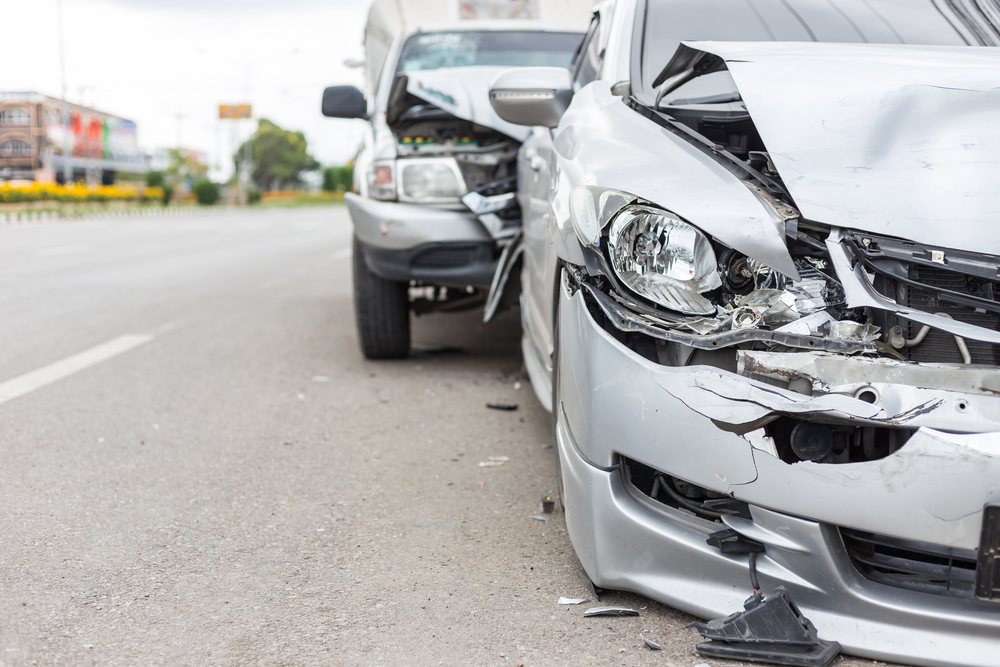How to obtain a traffic camera video of a car accident in Pennsylvania depends on the applicable rules in the city, state, or county. Additionally, where your crash occurs can change the process for requesting the documents. In many situations, you need to get a subpoena before getting a copy of something like red light or dash cam footage. You can get a subpoena by asking the court to issue one in an ongoing case (such as a car crash lawsuit). Traffic wreck recordings can be used as compelling evidence in court to prove who is (and is not) at fault.
The Pennsylvania car accident attorneys at Kalikhman & Rayz, LLC, have served Huntingdon Valley, Philadelphia, Allentown, and the surrounding areas for decades. Our tireless dedication to the injured shows in our impressive results and how we treat our clients. When you work with us, we take steps to help you feel valued, seen, and supported throughout the process.
How to Obtain a Traffic Camera Video of a Car Accident
To get traffic camera footage, you first need to identify the location of the crash. Then, you can use the location details to determine what governmental agency has the recording. Next, you must contact that agency and ask for a copy and how to request these materials. Sometimes, you may have to get a subpoena (a court-ordered request for information). If this is the case, you also need to serve the subpoena on the agency.
Identify the Location of the Crash
The first step is to identify the location of the crash. Be as specific as possible here and determine the official name of the road you were on when the accident occurred. You can find this information on the ticket given to you by the police officers. Or you can look online to find the intersection information. Other details that can come in handy are the cardinal direction (e.g., North or Southwest) you and the other cars were traveling. You may need this information to ensure the footage you’re requesting shows what you’re looking for.
Figure Out What Government Agency Has the Accident Footage
Now that you know where the accident occurred and what direction you were traveling, it’s time to figure out who has the footage. If you were on a state highway or tollway, the Pennsylvania Department of Transportation may have the video. But if you were on a private road, you may have to ask the business owner for any footage they may have. If the municipal, township, or county government manages the local or city street, you may need to ask a local department instead.
Contact the Agency Who Has the Footage
Now that you know who has the footage you’re looking for, it’s time to contact them. You can accomplish this by calling them or sending a written message. Regardless of which method you use, note the contents of the phone call and when it occurred. You may need to reference this information later, so it’s best to keep it handy. In some cases, the agency may send the recording to you right away, but some situations may call for you to submit a formal report. The agency may have a specific form or method that you need to follow to submit a request. Or they may refuse to give you the information until you have a subpoena.
Get (and Serve) a Subpoena
Sometimes, you may need to get a subpoena and serve it on (send it to) the agency with the traffic camera recording you’re looking for. A subpoena is a formal, court-ordered demand for information or materials. A subpoena can ask a person to appear in court or at an official proceeding (such as a deposition). Or, it can ask someone to submit records.
In most situations, only a court (or clerk of the court) can authorize an official subpoena. If the agency refuses to turn over the recording without a court order, getting a subpoena may be necessary. Once you have the subpoena, you must serve it on the agency. “Serve” is legal jargon for sending or delivering something to a person. Depending on the context, this may involve mailing the document to someone using certified mail. In other cases, it may require you to ask the police to deliver the document to the agency in question.
How Do I File a Subpoena to Get a Video of a Car Accident?
To get a subpoena, you may need to have a pending court case (e.g., a car accident lawsuit). That means you or the other party filed a legal claim, and the case is still pending. Without a live lawsuit, you probably can’t get a subpoena from the clerk. If you haven’t filed your case yet or have questions about the subpoena process, now is a good time to talk to a car accident lawyer. They can help you file your case and take the steps necessary to obtain critical evidence.
Do Car Insurance Companies Look at Traffic Camera Footage?
Insurance companies often perform crash investigations before paying money on a claim. As part of this, they may review photographs or recordings of the wreck. Other sources they may look to are police reports, medical records, eyewitness testimony, and physical evidence from the scene (such as tire marks).
If the insurance company in your case says they reviewed the footage before making you a settlement offer, it’s a good idea to look at this evidence on your own, as well. What you see when you view the recording may differ from what the insurer says they see. Since they may use these details to accept or deny your claim, it’s helpful to look at the evidence and see what you think happened. You can use this to argue for a higher settlement or to prove the other driver is at fault.
Can You Use Traffic Camera Footage as Evidence in a Car Accident Case?
You may be able to use videos of the accident scene in a car collision case. Live crash footage can be impactful evidence in a motor vehicle wreck lawsuit. The recording can tell the story of what happened before, during, and after the crash, helping to shed light on who’s at fault. If you think a video recording is available, it’s probably a good idea to pursue this.
To use the footage, you need to prove its authenticity. For example, you should be able to show that it’s a real video of what happened (versus a recreation). Additionally, you need to establish that it hasn’t been substantially altered. Part of this involves receiving the recording from an official agency (where applicable) and following the set procedure for doing so. If you don’t follow the official procedure for requesting the footage, the other side may try to have this evidence thrown out in court. You can help avoid this possibility by following the formal steps for obtaining the material and documenting how you accomplished this.
How Can Traffic Camera Videos Help You Prove Who’s at Fault?
Videos of the accident scene provide critical evidence of the who, what, why, when, where, and how of a crash. It shows the actual unfolding of events rather than requiring courts, attorneys, juries, and others to piece together information from photographs, testimony, and other sources. Recordings also show vital details such as the weather, who had the right of way, and who made the first move. These dynamic pieces of evidence can be instrumental in multicar crashes, where many variables happen all at once to cause an accident.
Kalikhman & Rayz, LLC: Dedicated Traffic Accident Attorneys Serving Pennsylvania
Being in a car accident can be a life-changing event, causing you to miss work, lose income, and forego enriching activities like hobbies while you are in the recovery process. At Kalikhman & Rayz, LLC, we understand your struggles and are here to help make things right. Lawrence Kalikhman has decades of experience fighting for victims of car crashes throughout Pennsylvania. Past clients praise him and his team for their incredible diligence and ability to strive for results. His advocacy has also earned him a spot on the distinguished list of America’s Top 100 Personal Injury Attorneys®.
If you were in an accident and want to obtain the traffic camera video, contact us today by calling us today to schedule a no-obligation consultation.








